When to Say Goodbye to the Crib
I’ll be honest with you. Figuring out when to move your little one from their crib to a real bed ranks right up there with potty training on the list of parenting decisions that keep us up at night. We’ve all seen that kid at preschool who still sleeps in a crib at four years old, right? Nobody wants to be that parent. But we’re not trying to rush our babies into growing up too fast either.
So here’s what I’ve learned after going through this twice myself and talking to more parents than I can count. Most kids are ready to make the big switch somewhere between 18 months and two years old. Now, before you start marking your calendar, let me tell you something really important. Every child is different. I know that sounds like a cop-out answer, but it’s true. My daughter was climbing out of her crib at 16 months like she was training for the Olympics. My son? He was perfectly content in his crib until he was almost three.
The thing is, keeping a child in a crib too long can actually create some problems. I’m not just talking about the awkward conversations at playdates. We’re talking real safety concerns here. When a kid gets too big for their crib and starts trying to escape, that’s when injuries happen. Picture this: a determined toddler launching themselves over the rail at 2 AM. Not a pretty scene. I’ve heard stories from the emergency room that would make your hair stand on end.
But here’s where it gets tricky. Some parents (and I’m raising my hand here) get a little too attached to the crib. It represents that last bit of babyhood, you know? When they’re in that crib, they’re still our babies. The moment they move to a big kid bed, we have to face the fact that they’re growing up. It’s an emotional thing, and nobody really talks about it.
There are some pretty clear signs your child is ready for a toddler bed. Are they climbing out of the crib? That’s your number one indicator right there. My pediatrician told me that once a child successfully climbs out even one time, the crib is no longer safe. Period. Are they potty training? Kids who are learning to use the bathroom at night need to be able to get out of bed independently. Makes sense, right? You can’t expect them to call for you every single time nature calls at 3 AM.
Another thing to watch for is their actual size. If your kid is getting too tall for the crib or looks cramped in there, it’s probably time. I remember looking at my son one morning and realizing his feet were touching the end of the crib. When did that happen? It seemed like overnight he’d grown a foot. The crib that looked enormous when we brought him home from the hospital suddenly looked like a shoebox.
Let me share something that surprised me. The transition works better when there’s not a lot of other stuff going on in your child’s life. Don’t move them to a toddler bed the same week you’re potty training, or right after a new baby arrives, or when you’re moving to a new house. Pick a relatively calm period. Your kid (and you) will thank yourself later. We made the mistake of trying to do too much at once with our first child, and let me tell you, it was a disaster. Nobody slept for weeks.
You might be wondering why we can’t just skip the toddler bed and go straight to a twin bed. Good question. The answer is that toddler beds are lower to the ground, which means fewer injuries when your kid inevitably rolls out in the middle of the night. And trust me, they will roll out. Probably multiple times. The lower height gives parents peace of mind, and it makes it easier for small children to get in and out by themselves.

Understanding What a Toddler Bed Really Is
Let me paint you a picture of what we’re working with here. A toddler bed sits somewhere in the middle of the baby furniture world. It’s bigger than a crib but smaller than a twin bed. Think of it as the training wheels of sleeping arrangements. The beauty of these beds is that they’re specifically designed for kids who are developing their independence but still need some boundaries.
The dimensions are pretty clever when you think about it. Most toddler beds are about 28 inches wide and 52 inches long. Compare that to a crib, which is roughly 28 by 52 inches on the inside sleeping space, and you’ll see they’re almost identical. This is genius design, people. It means you can keep using your crib mattress and crib sheets. We’re talking about saving money here, which any parent will appreciate.
What really sets toddler beds apart is the height. These beds sit much closer to the ground than regular beds. We’re talking maybe 8 to 12 inches off the floor. When my daughter first transitioned, she rolled out of bed at least three times a week for the first month. But guess what? Because the bed was so low, she never got hurt. She’d just crawl back in and keep sleeping. Try that with a twin bed, and you’re looking at some potential bumps and bruises.
Most toddler beds come with built in guardrails on the sides. These aren’t the prison bars of a crib, but they’re not nothing either. They’re just high enough to keep a sleeping child from rolling out, but low enough that a kid can easily climb over them to get out of bed. It’s about finding that sweet spot between safety and independence. My son used to use the guardrail as a little shelf for his stuffed animals. Whatever works, right?
Here’s something I didn’t expect: the transition to a toddler bed can be really stressful for some kids. I mean, think about it from their perspective. They’ve slept in the same cozy, enclosed space since they were born. That crib is their safe spot, their nest. Now we’re asking them to sleep in this wide open bed where they could theoretically get up and wander around at night. That’s a big change for a two year old brain to process.
This is why I’m a huge believer in letting your child have some say in the process. I know what you’re thinking. They’re two. What do they know about furniture shopping? But here’s the thing: when kids feel like they have some control over a big change, they handle it better. We let our daughter pick between three different toddler beds that we’d already decided were acceptable. She felt like she made the choice, and that made all the difference.
The bed becomes more than just a place to sleep. It becomes their special spot. Their first real piece of furniture that’s truly theirs. I’ve seen kids who were terrified of the transition get excited about it once they realized they got to pick out a cool bed. We’re tapping into that natural desire for independence that starts developing around this age.
Some parents try to make the switch happen overnight, and that rarely goes well. What worked for us was introducing the idea slowly. We started talking about big kid beds a few weeks before we actually made the purchase. We read books about kids moving to new beds. We visited friends who had toddler beds and let our kids see them. By the time the bed actually arrived, they were ready for it. Well, mostly ready. There were still some tears and requests to go back to the crib, but it wasn’t the total meltdown it could have been.
I’ll tell you what doesn’t work: forcing a kid who isn’t ready. I watched my neighbor try this with her son, and it was painful. He wasn’t ready, plain and simple. Every bedtime became a battle. He’d cry, he’d get out of bed fifty times, he’d wake up scared in the middle of the night. After two weeks of this, she wisely moved him back to the crib. Three months later, they tried again, and it went smoothly. There’s no prize for being the first parent to transition your kid to a bed.

Exploring Fun and Functional Toddler Bed Designs
Walk into any kids furniture store, and your head will spin from all the options. I’m talking beds shaped like cars, beds that look like castles, beds with slides attached to them. It’s like Disneyland met IKEA and had a baby. The variety is absolutely wild, and honestly, it can be overwhelming. But it’s exciting too, right? This is your chance to create something really special for your child.
Racecar beds are probably the most popular option for boys, and I totally get why. What kid doesn’t want to sleep in a car? My nephew has one, and he literally runs to bedtime now. The bed is shaped like a sports car, complete with wheels, a spoiler, and racing decals. Some of them even have working headlights. Is it a bit much? Maybe. Does it make bedtime easier? Absolutely. And that’s worth its weight in gold to any parent who’s dealt with bedtime battles.
These car beds come in all different styles too. You’ve got your classic red racecars, your police cars, your fire trucks. Some are pretty simple and streamlined, while others are so elaborate they barely look like beds anymore. My advice? Think about your space and how long you want this bed to last. A really elaborate themed bed might be amazing when your kid is two, but will they still love it when they’re five? Maybe, maybe not.
The captain’s bed is another route you can go, and this one’s a smart choice for a bunch of reasons. These beds are designed to look like the beds you’d find on a ship or in a captain’s quarters. But here’s the really clever part: they usually come with storage built right in. We’re talking drawers underneath, shelves in the headboard, maybe even little cubbies on the sides. For parents dealing with small bedrooms and too many toys, this is a lifesaver.
I’ve got a friend who swears by her kids’ captain’s bed. She keeps all his pajamas and underwear in the drawers underneath, which means he can get dressed for bed without even leaving his room. The headboard has shelves where he keeps his bedtime books. It’s functional and it teaches him to be organized. Win win. Plus, the nautical theme is cute without being babyish. It’s something that can grow with a child for years.
But let’s say your kid isn’t into cars or ships. No problem. There are beds shaped like princess carriages, fire stations, dollhouses, treehouses, trains, airplanes, and just about anything else you can imagine. I’ve seen beds with tent canopies that turn the whole thing into a camping experience. I’ve seen beds with built in reading nooks. The creativity in this industry is pretty amazing.
Now, here’s my hot take on themed beds. They’re fun, but think carefully before you commit. A themed bed is a big piece of furniture that’s going to be in your child’s room for several years at least. Kids’ interests change fast. The dinosaur obsession of age three might be replaced by a superhero phase at age four and a space exploration kick at age five. Can you afford to buy a new bed every time their interests shift? Probably not.
That’s why some parents go for more subtle themed elements. Maybe it’s a regular toddler bed frame, but you get race car bedding. Or you paint the bed frame in fun colors that match a theme. You can always change out the bedding and decorations as your child’s interests evolve, but you’re not stuck with a giant plastic car taking up half the bedroom.
Let me share what we did with our kids. For our daughter, we got a simple white toddler bed with a curved headboard and footboard. Nothing too fancy. But we let her pick out bedding with her favorite characters, and we decorated the wall behind the bed with removals decals that she chose. When her interests changed, we peeled off the old decals, got new bedding, and boom. New room vibe without buying new furniture.
With our son, we went with a low platform bed in natural wood. Super simple and clean looking. But we built a little canopy over it with some fabric and string lights, and he thinks it’s the coolest fort bed ever. The whole setup cost us maybe fifty bucks beyond the bed itself, and we can change it whenever we want.
The point I’m trying to make is this: get your kid involved in choosing their bed or decorating their space, but you don’t have to go overboard with elaborate themed furniture if it doesn’t make sense for your family. There’s a middle ground that keeps kids excited while also being practical for parents. Find what works for your family, your budget, and your space.
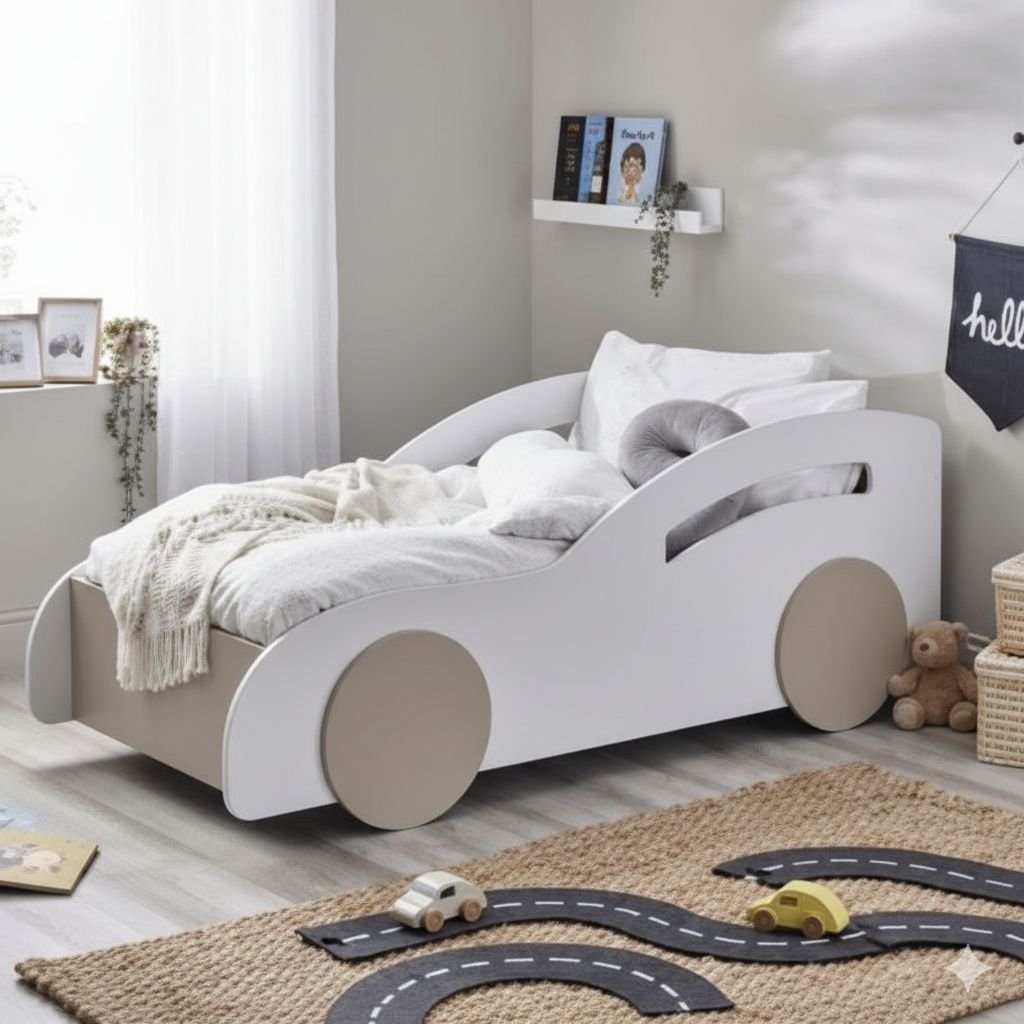
The Smart Parent’s Guide to Convertible Cribs
Let me tell you about one of the best furniture investments we ever made. Convertible cribs. I wish someone had told me about these before we had our first child. We went the traditional route, buying a regular crib, then a toddler bed, then eventually a twin bed. By the time our daughter was six, we’d bought three different beds. Do the math on that, and it’s a lot of money going out the door.
A convertible crib is exactly what it sounds like. It starts as a standard crib for your newborn. Then, when your child is ready, you remove one side and convert it into a toddler bed. Later, with some additional parts, many of these cribs can transform into a full size twin bed or even a double bed. We’re talking about a piece of furniture that can literally last from birth through the teenage years. That’s incredible value.
Here’s the thing that really sold me when we finally bought one for our second child. Some kids really struggle with change. My son is one of those kids. He likes routine and familiarity. The idea of transitioning him to a completely different bed was giving me anxiety for months. Then I learned about convertible cribs, and it was like a light bulb went off. If the bed could transform gradually, he’d still be sleeping in the same familiar piece of furniture. Same headboard, same footboard, just configured differently.
And you know what? It worked like a charm. We converted his crib to a toddler bed on a weekend when he was at grandma’s house. When he came home, we made a big deal about his “big boy bed,” but really, it was still his crib. Just with one side removed and a guardrail added. He barely blinked. Compare that to the drama we went through with our daughter when we switched her to a completely new bed. Night and day difference.
The cost savings are real too. A decent convertible crib runs anywhere from three hundred to eight hundred dollars, depending on the brand and quality. That might seem like a lot upfront, but let’s break it down. A regular crib costs about two hundred to four hundred dollars. A toddler bed is another one fifty to three hundred. A twin bed frame is another hundred to three hundred. You’re looking at four fifty to a thousand dollars when you buy everything separately, plus the hassle of selling or storing the old furniture each time.
With a convertible crib, you make one purchase. Done. You might need to buy conversion kits as your child grows, but those are usually under a hundred dollars. The furniture stays in the room, you’re not dealing with multiple deliveries or assembly jobs, and you’re not trying to figure out what to do with a barely used toddler bed when your kid outgrows it.
I’ll give you another benefit I didn’t expect. These convertible cribs are usually built to last. Manufacturers know these pieces need to survive years of use, so they tend to use better materials and construction. The convertible crib we bought is solid wood, beautifully finished, and honestly looks like real furniture instead of something from a kids’ store. It’s the kind of piece that doesn’t look out of place in a nicely decorated room.
Some models even come with matching changing tables or dressers that can also convert as your child grows. The changing table becomes a regular dresser when you’re done with diapers. Everything matches, everything grows with your child. I love furniture that works hard and serves multiple purposes.
Now, let me give you the real talk. Convertible cribs aren’t perfect for everyone. If you’re planning to have multiple kids close together in age, you might need that crib to stay a crib while the older child moves to a toddler bed. You can’t convert it if baby number two is still using it. That’s where having separate pieces makes more sense. We had four years between our kids, so this wasn’t an issue for us, but it might be for you.
The other consideration is that conversion kits can sometimes be hard to find years down the road. Furniture companies change their models, go out of business, or discontinue products. If you need a conversion kit five years after buying your crib and the manufacturer doesn’t make that model anymore, you could be out of luck. My recommendation? Buy all the conversion parts when you purchase the crib, even if you won’t need them for years. Stick them in storage. Problem solved.
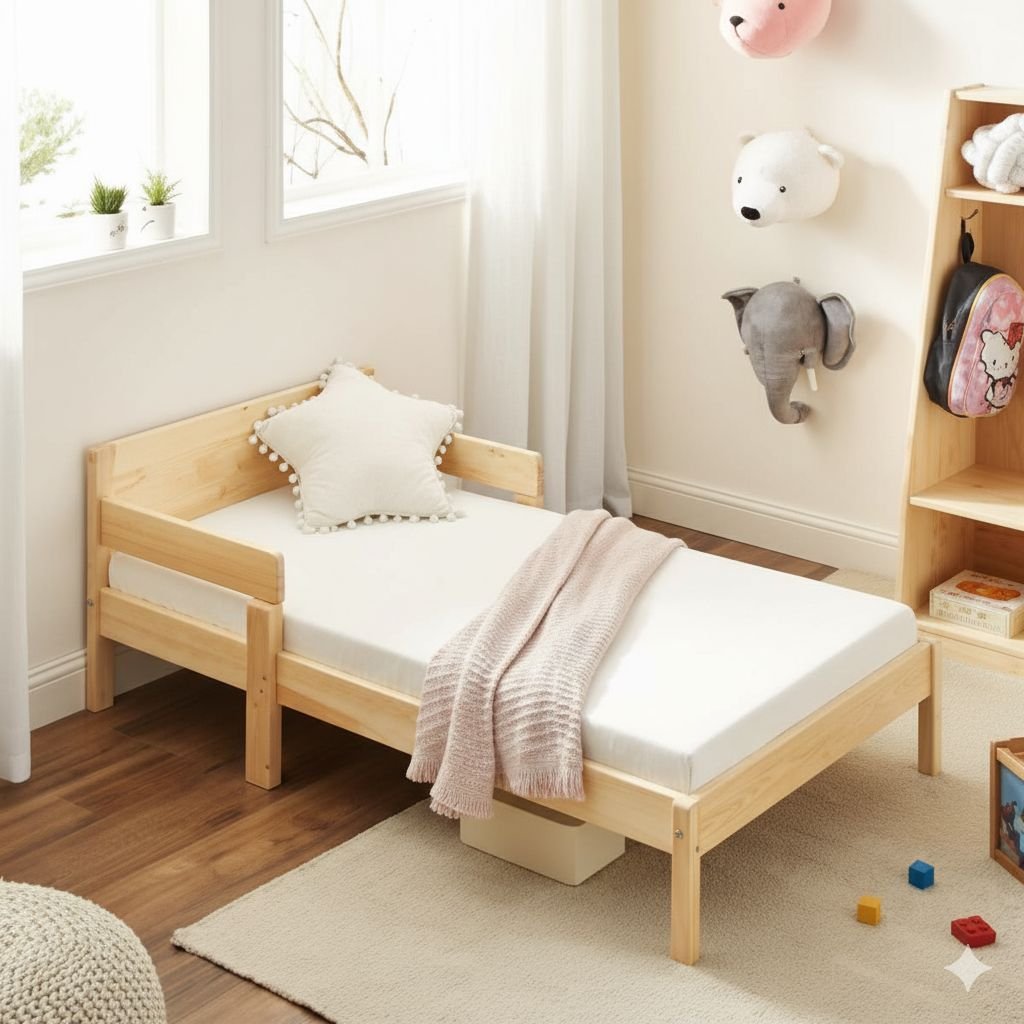
Materials and Features That Make a Difference
Let’s talk about what these beds are actually made of and why it matters. The most popular material by far is solid wood. We’re talking about hardwoods like oak, maple, cherry, and birch, or sometimes softer woods like pine. There’s something about wood furniture that just feels right, you know? It’s sturdy, it’s classic, it’s something you could potentially pass down to the next generation if you take care of it.
Wood beds have this warmth to them that you don’t get with other materials. They come in all different finishes too. Natural wood stains, painted finishes in every color you can imagine, distressed looks, glossy modern finishes. The versatility is part of why wood remains the top choice for parents. A well made wooden toddler bed can handle the beating that kids dish out. My son used to use his bed frame as a jungle gym. Six years later, it’s still solid as a rock.
But wood isn’t your only option. Engineered wood products like MDF or particleboard are common in less expensive beds. These materials can be fine if they’re done well. The key is looking at how thick the material is and how the bed is constructed. Cheap particleboard furniture can fall apart or get damaged easily, especially if it gets wet. But a well made piece using quality engineered wood and good construction techniques can be perfectly adequate and much easier on your wallet.
Metal beds are another route you can go. These are less common for toddler beds specifically, but they exist. Metal is durable and easy to clean, which are both big pluses. The downside is that metal can be cold to the touch and doesn’t have that same warm, cozy feeling as wood. Some kids don’t care about this at all. Others really notice it. You know your child best.
Then you’ve got plastic beds, which are almost exclusively the themed beds we talked about earlier. That racecar bed? Probably made of molded plastic. These can be great because they’re lightweight, easy to clean, and kids usually love the look of them. The concern with plastic is durability. Some plastic beds are really well made and will last for years. Others feel flimsy and cheap the moment you touch them. You get what you pay for with plastic, maybe more than with any other material.
Let me tell you about a feature that saved our sanity: under bed storage. Some toddler beds come with built in drawers underneath, and this is genius for small spaces. We live in a house with tiny bedrooms, and there’s never enough storage. Having two or three drawers under the bed gave us a place for off season clothes, extra bedding, or toys. It’s storage space you’re not using anyway when the bed is just sitting there.
The drawers need to be good quality though. Cheap drawers with crummy slides will drive you crazy. They’ll stick, they’ll fall off the tracks, they’ll break. Look for drawers with metal glides and stops that prevent them from pulling all the way out. Test them in the store if you can. Open and close them a few times. Do they move smoothly? Do they feel solid? These are the questions that matter.
Another feature worth considering is an attached bookshelf or headboard storage. My daughter’s bed had a little cubby in the headboard where she kept her bedtime books and her stuffed animals. It wasn’t elaborate, just a simple shelf, but she loved having her things right there within reach. It made the bed feel like her special space.
Some beds come with an attached footboard that serves as a toy box. The lid lifts up, and there’s storage inside. This can be handy, but I’ll tell you, those lids can be dangerous if they don’t have the right safety hinges. A heavy lid falling on little fingers is no joke. Make sure any storage with a lid has soft close hinges or support hinges that keep the lid from slamming shut.
Wheels or casters on the bed frame might seem like a weird feature to highlight, but hear me out. If you’ve ever tried to move a toddler bed to vacuum under it or to retrieve a toy that rolled underneath, you know what a pain it can be. Some beds have small wheels on the legs that make it easy to scoot the bed around for cleaning. Game changer. Just make sure the wheels lock in place so the bed doesn’t slide around when your kid is climbing in and out.
Safety Features You Can’t Afford to Ignore
I’m going to be straight with you. This is the section you need to pay the most attention to. I don’t care how cute a bed is or how much your kid loves it. If it’s not safe, it’s not worth having in your home. Kids’ furniture safety isn’t something to mess around with, and I’ve learned this the hard way.
First things first: sturdy construction. This should be obvious, but you’d be surprised how many flimsy beds are out there. Give the bed a good shake when you’re looking at it. Does it wobble? Does it creak? Does anything feel loose? A bed frame should be rock solid. Remember, kids are going to jump on this thing. They’re going to slam into it. They’re going to test every possible way it could break. The frame needs to handle that.
Look at the joints where pieces connect together. The best construction uses wood dowels and wood glue in addition to screws. Furniture that’s held together only with screws or those little cam lock things can loosen over time. Our first toddler bed did this, and I was constantly tightening screws. It was annoying and felt unsafe. The second bed we bought used better joinery, and we never had that problem.
Sharp edges and corners are a huge issue. Little kids are basically drunk adults. They bump into things constantly. A bed with sharp, pointy corners is a recipe for injuries. Look for beds with rounded edges and smooth corners. Some manufacturers use a rounded over edge on all the wood surfaces, which is smart design. If you end up with a bed that has some sharper edges, you can buy corner guards made specifically for furniture. They’re not ideal, but they work in a pinch.
The gap between the mattress and the bed frame matters more than you might think. If the gap is too big, a child can get their head, limbs, or body trapped in that space. The safety standard is that the gap should be no more than two finger widths. Test this yourself. Put the mattress in the frame and check all the way around. If you can fit more than two fingers in the gap, the mattress is too small for that frame.
Guardrails are a must have for toddler beds, but not all guardrails are created equal. The rail should be tall enough to prevent rolling out while sleeping but low enough that a child can climb over it safely when awake. Six to eight inches above the mattress is about right. The guardrail should attach securely to the bed frame with no gaps where a child could get stuck. We had one rail that attached with just a couple of clips, and it popped off one night when my son rolled into it. Terrifying. We replaced it with a better one immediately.
Scroll work or decorative cutouts in the headboard and footboard can look really pretty, but they can be dangerous. Any opening needs to be either less than three and a half inches (too small for a head to fit through) or more than nine inches (big enough that a child can’t get stuck). The in between sizes are where kids get their heads or necks trapped. Check every opening and decorative element on the bed.
Here’s something I didn’t know until I talked to a pediatric emergency room doctor: the mattress support system is critical. The slats or platform that hold the mattress need to be strong and properly spaced. If they’re too far apart, the mattress can sag down between them, creating an uneven sleeping surface. If they’re weak, they can break. Either situation is a safety hazard. Look for slats that are no more than three inches apart and made from solid, thick material.
The paint or finish on the bed needs to be non toxic. This should go without saying in the modern era, but I’m saying it anyway. Lead paint isn’t legal on kids’ furniture in the United States anymore, but imported furniture or old secondhand pieces could potentially have it. Look for certifications that confirm the finish is safe. Low VOC or zero VOC finishes are best because they don’t off gas harmful chemicals into your child’s room.
Certifications matter. Look for the JPMA certification seal or compliance with ASTM safety standards. These certifications mean the furniture has been tested and meets safety requirements. It’s not a guarantee that nothing will ever go wrong, but it’s a good starting point. Uncertified furniture from questionable manufacturers is a gamble I wouldn’t take with my kid’s bed.
Adjustable mattress heights are mostly a crib feature, but some convertible cribs maintain this when converted to toddler beds. This is actually really useful. When the bed is lower, it’s easier for small children to get in and out by themselves. As they grow, you can raise the mattress. This feature prevents the bed from feeling too babyish as your child gets bigger.
Assembly matters more than people think. I’ve put together a lot of flat pack furniture in my life, and I can tell you that some of it is designed well and some of it is a nightmare. Read reviews about assembly before you buy. Is it straightforward? Are all the parts included? Are the instructions clear? Poorly assembled furniture is unsafe furniture. If you’re not confident in your assembly skills, hire someone or ask a handy friend for help. This isn’t the time to wing it.
Making the Right Choice for Your Family
We’ve covered a ton of information here, and your head is probably spinning a little bit. That’s okay. Take a breath. Choosing the right bed for your child doesn’t have to be overwhelming if you approach it systematically. Let me walk you through how to make this decision in a way that works for your specific family.
Start by measuring your space. I know this sounds basic, but I can’t tell you how many people buy furniture without measuring first and then can’t get it through the doorway or it takes up way too much room. Measure the room where the bed will go. Think about where you’ll position it. Will it fit under the window? Against that wall? Is there room to walk around it? Can you open the closet door if the bed is positioned there?
Write down those measurements and keep them with you when you’re shopping. Bring a tape measure to the store if you’re shopping in person. Salespeople will tell you anything fits anywhere. Trust yourself and your measurements. We almost bought a bed that would have left about six inches of walking space in my daughter’s room. It looked fine in the showroom with all that open space, but it would have been ridiculous in her actual bedroom.
Think about your child’s personality and needs. Is your kid a wild sleeper who moves around constantly? You need sturdy guardrails. Is your child cautious and careful? You might be fine with lower rails. Does your kid have a lot of stuff? Consider a bed with storage. Is your child going through a clingy phase and scared of changes? A convertible crib that transforms gradually might be your best bet.
Budget is a real factor for most families, and there’s no shame in that. Toddler beds range from under a hundred dollars for basic models to over a thousand for high end designer pieces. Figure out what you can realistically afford, remembering that you’ll need a mattress too if you’re not using a crib mattress. Don’t forget about bedding. Those costs add up fast.
But here’s my opinion on budget: this is one area where it’s worth stretching a little bit if you can. A well made bed is safer and will last longer. If you buy a cheap bed and it breaks or becomes unsafe after a year, you’ll end up spending more money replacing it. If you absolutely can’t afford a better bed right now, that’s okay. Just inspect cheap furniture extra carefully for safety issues and be prepared to replace it sooner.
Think about longevity. How long do you want this bed to last? If you want something that will work until your child is ready for a twin bed around age five or six, a nice toddler bed makes sense. If you want furniture that will last through childhood, a convertible crib or a low twin bed with guardrails might be a better investment. There’s no wrong answer here. It depends on your situation.
Consider your other kids if you have them. Will this bed eventually be passed down to a younger sibling? If so, you might want to avoid highly gendered or themed options that won’t work for your next child. Neutral designs have better resale value too if you plan to sell the furniture later.
Involve your child in the decision, but set boundaries. We’re not taking a two year old to the furniture store and letting them pick anything they want. That’s chaos. Instead, do your research first. Narrow it down to three options that meet your safety requirements, fit your space, and work with your budget. Then let your child choose from those three. They feel empowered, but you maintain control over the practical aspects.
Read reviews obsessively. Online reviews are a goldmine of information about how furniture holds up over time, how difficult it is to assemble, whether the company has good customer service, and what real parents think of the bed after living with it. Take reviews with a grain of salt, but look for patterns. If twenty people mention that the finish scratches easily, that’s probably true.
Don’t buy used furniture without thoroughly inspecting it. I’m all for saving money and buying secondhand when it makes sense. But kids’ furniture safety standards have changed over the years. That beautiful antique crib at the thrift store might have lead paint or spacing that doesn’t meet current safety requirements. If you do buy used, check for recalls on that specific model. The CPSC website lets you search for recalled products.
Think about how the bed will fit with your child’s room decor. This might seem shallow when we’ve been talking so much about safety, but your kid will be looking at this bed every day for years. If it clashes horribly with everything else in the room, that’s going to bug you. Choose something that either matches your existing decor or is neutral enough to work with future changes.
Here’s something to think about that most people miss: how easy is the bed to clean? Kids are messy. They spill things, they have accidents, they get sick. A bed with a lot of nooks and crannies or hard to reach places is going to be a pain to keep clean. Smooth surfaces and simple designs are your friends here. We had one bed with all these decorative grooves that collected dust and crumbs. Cleaning it was a nightmare.
Finally, trust your gut. If something feels off about a bed, don’t buy it. Maybe it’s the construction, maybe it’s the price seeming too good to be true, maybe it’s just a vibe. Listen to that inner voice. On the flip side, if you find a bed that checks all your boxes and feels right, go for it. Don’t second guess yourself into paralysis.
Bringing It All Together for Sweet Dreams
So here we are at the end of this journey through the world of toddler beds. If you’re feeling a bit overwhelmed by all the information, I totally get it. Choosing a bed for your child involves balancing safety, functionality, budget, and your kid’s preferences. That’s a lot of spinning plates.
Let me give you the bottom line. The transition from crib to toddler bed is a big milestone for your child and for you. It marks the end of the baby phase and the beginning of childhood proper. That’s emotional, and it’s okay to have feelings about it. But it’s an exciting step too. Your child is growing and developing independence, and that’s something to celebrate.
The right bed for your family is one that keeps your child safe, meets your practical needs, and makes bedtime a positive experience. For some families, that’s a themed racecar bed that their son is thrilled about. For others, it’s a simple wooden bed with storage drawers. For still others, it’s a convertible crib that will grow with their child for years to come. All of these choices can be right depending on your situation.
Safety has to come first. I can’t stress this enough. A bed can be beautiful and affordable and perfect in every way, but if it’s not safe, it’s not an option. Period. Take the time to check construction quality, look for sharp edges, make sure guardrails are secure, and verify that the bed meets safety standards. Your child’s wellbeing is worth the extra effort.
Involving your child in the process makes the transition smoother. When kids feel like they have some control and ownership over their new bed, they’re more likely to embrace the change. Even if that involvement is just picking out new sheets or choosing between two beds you’ve already decided are acceptable, it makes a difference. We’re giving them a sense of agency while still making sure the practical and safety needs are met.
The market offers an incredible variety of options at every price point. You don’t need to spend a fortune to get a safe, functional toddler bed. But you also shouldn’t assume that the cheapest option is good enough. Look for the best quality you can afford, read reviews, and inspect furniture carefully. Remember that this is an investment in your child’s sleep and safety for the next several years.
Convertible cribs deserve serious consideration, especially if you’re looking for value and don’t want to deal with multiple furniture purchases as your child grows. The ability to transform from crib to toddler bed to twin bed means one purchase that lasts for years. For the right family, this is an incredibly smart choice.
Themed beds can be wonderful if you go into it with eyes open. Kids love them, and they make bedtime more fun. Just be realistic about how long your child’s interest in that particular theme will last and whether you’re okay with having a very specific piece of furniture in the room for years. There’s nothing wrong with choosing a more neutral bed and adding theme elements through bedding and decor that you can easily change.
Storage features add so much value to a child’s bed. Built in drawers, shelves, or other storage solutions help manage the massive amount of stuff that comes with kids. If you have limited space, this can be a game changer. Even if space isn’t a huge issue, having everything organized and accessible makes daily life easier.
As you move forward with your decision, remember that there’s no single perfect bed that works for everyone. What matters is finding the right fit for your child, your space, your budget, and your family’s needs. Take your time, do your research, and make a thoughtful choice. Your child will spend roughly a third of their day in this bed. Making sure it’s a good one is worth the effort.
The toddler bed you choose will be part of your family’s life for years. It’ll be where your child dreams, where they wake up excited on Christmas morning, where they feel safe during thunderstorms, and where they recover when they’re sick. It’s more than just furniture. It’s part of their childhood landscape.
My kids are older now, and we’ve moved past toddler beds. But I still remember those early days of transitioning them to big kid beds. I remember my daughter’s excitement over her new bed and how proud she was to show it to anyone who visited. I remember my son clutching his favorite stuffed animal the first few nights in his converted crib, needing extra reassurance that everything was okay. These are the memories we build around these milestones.
So take a deep breath. You’ve got this. Armed with the information in this guide, you’re ready to make a smart choice about your child’s toddler bed. Pay attention to safety, consider your practical needs, involve your child in appropriate ways, and trust yourself. You know your kid better than anyone else. You know what will work for your family.
The perfect toddler bed is out there waiting for you and your little one. It might be a sleek convertible crib that will last for years. It might be a fun themed bed that makes your child giggle with delight. It might be a simple wooden frame with smart storage solutions. Whatever it is, you’ll recognize it when you find it. And when you do, you’ll be giving your child a safe, comfortable place to grow and dream.
Sweet dreams start with the right bed. Here’s to smooth transitions, peaceful nights, and watching our babies grow into confident big kids. They’re not going to be little forever, but we can make sure they have the best possible environment for this precious stage of their lives. That’s what good parenting looks like, and you’re already doing it by taking the time to research and make thoughtful choices.
Now go find that perfect bed. Your little one is ready for this next adventure, and so are you.
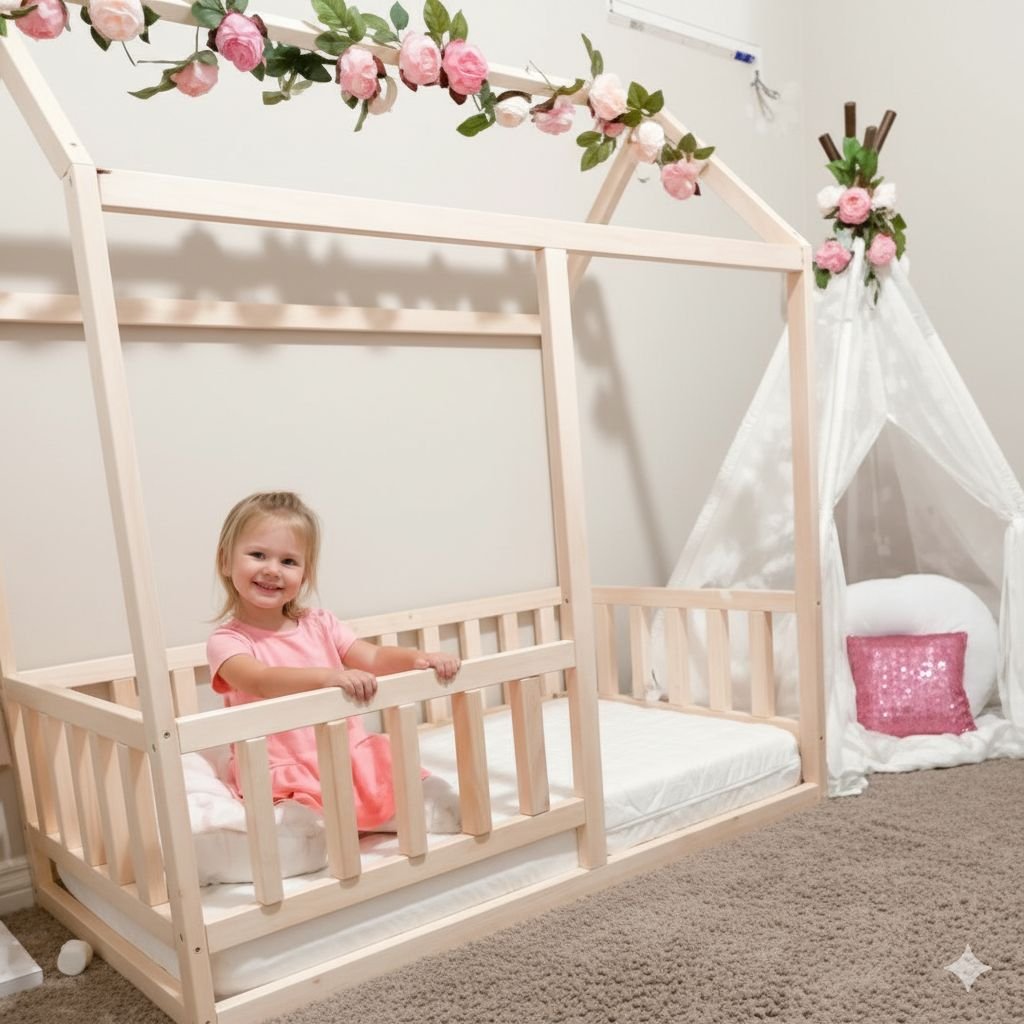



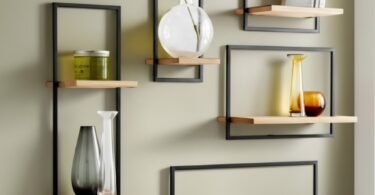
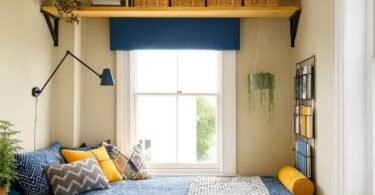
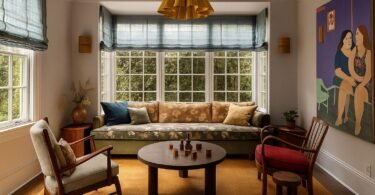

Leave a Comment